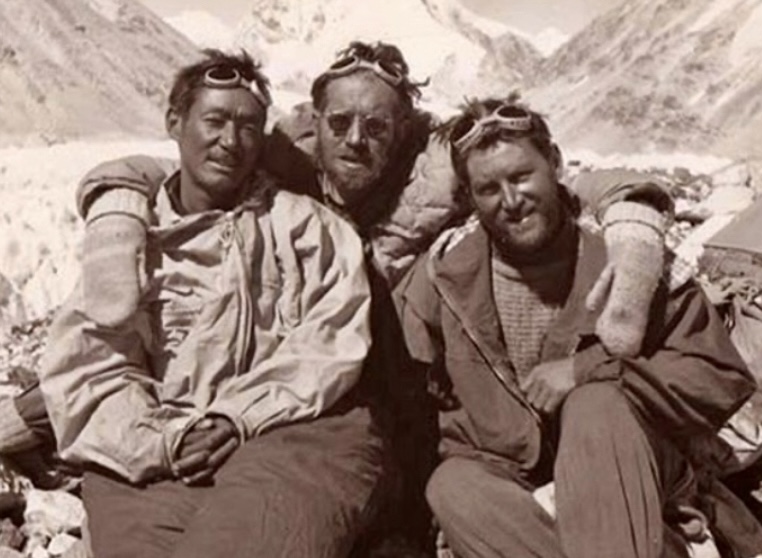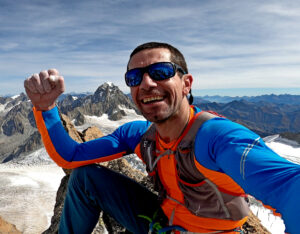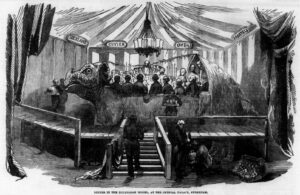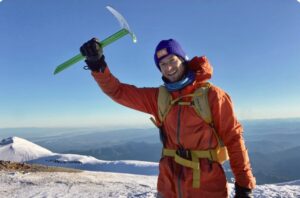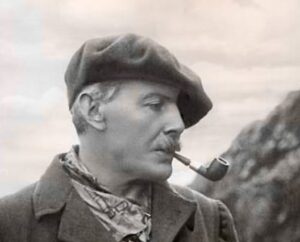On October 19, 1954, climbers topped out on Cho Oyu for the first time. A small Austrian party summited via the Northwest Ridge after approaching through Nangpa La. Herbert Tichy, Sepp Joechler, and Pasang Dawa Lama summited without supplemental oxygen.
Scouting Cho Oyu
In 1951, Eric Shipton led a British team to scout the mountain from the west while studying the routes up Everest. They examined Cho Oyu’s Northwest Ridge but didn’t climb, focusing on maps. In 1952, Shipton returned with a stronger group, including Edmund Hillary. They reached approximately 6,800m on the Northwest Ridge but hit a dangerous icefall with huge ice blocks. Shipton’s team found the icefall too difficult and dangerous and turned back.
Herbert Tichy and the 1954 expedition
Herbert Tichy, a 42-year-old Austrian geologist, led the 1954 expedition. Born in Vienna in 1912, he grew up hiking in the Austrian Alps. As a young man, he rode a motorcycle to India in 1935, crossing deserts and mountains while mapping rocks and writing about the people he met. World War II forced him into the German army.
After the war, he wrote books about his travels, including a popular one on Tibet. In 1952, he tried Kangchenjunga but aborted due to stormy weather. Tichy believed in small teams with light gear.
“We wanted to climb with the least possible means, relying on our own strength,” he wrote in the Himalayan Journal. The team carried tents, food, and cameras, but no oxygen or radios.
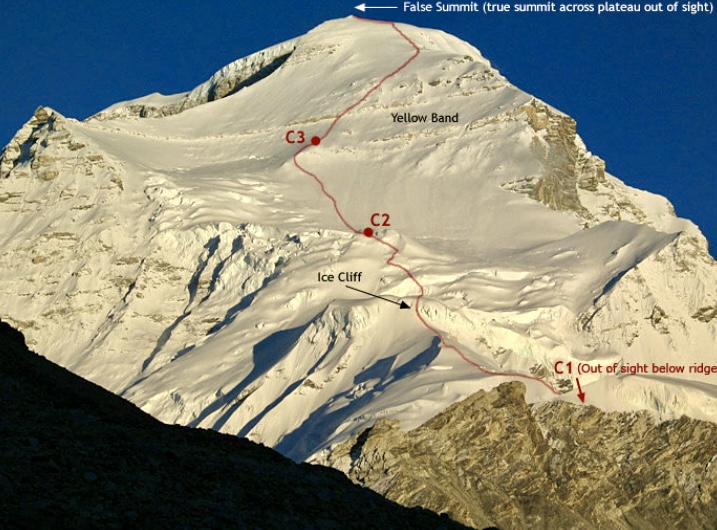
The normal route on Cho Oyu. Photo: Animal de Ruta
The team
Sepp Joechler, 31, was a bricklayer from Tyrol. Born in Landeck, he started climbing at 17 with his brother Hans. By the 1940s, he was carrying out bold winter climbs in the Lechtal Alps. He climbed the Eiger’s North Face in 1952 with Hermann Buhl.
Pasang Dawa Lama, 42, from Namche Bazaar, was already an experienced mountaineer. In 1937, he carried out the first ascent of a 7,000’er. Together with Spencer Chapman, he summited Chomolhari, surviving a challenging descent. He carried loads to 8,000m on early Everest trips and climbed Nanda Devi. He joined as the Sherpa leader of the expedition.
The Austrian party included Dr. Helmut Heuberger from Innsbruck, as well as Ajiba Sherpa, Angnima Sherpa, and Gyaltsen Sherpa.
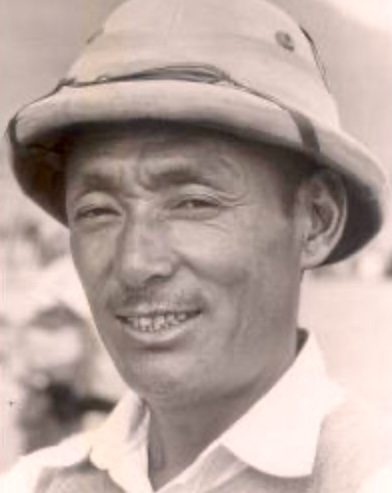
Pasang Dawa Lama. Photo: Wikipedia
Approach and establishing camps
The team left Austria in early September and flew to Kathmandu before heading to Namche Bazaar. During their approach, the monsoon brought rain and mist that turned to snow above 3,900m. On September 19, they reached Namche Bazaar for final preparations. Four days later, after a trek over moraines and frozen glaciers, they crossed the Nangpa La (Nangpa Pass) into Tibet.
They established Base Camp at 5,500m on the Gyabrag Glacier, below Cho Oyu’s Northwest Ridge. Using Shipton’s maps, they planned a better route.
“We studied the mistakes of earlier expeditions and chose a line that avoided the worst of the icefall,” wrote Tichy. In the first week of October, they set up Camps 1 and 2.
The icefall below Camp 3 (at around 6,560m) was the hardest part. Pasang and Ajiba spent two days finding a way through, tying ropes. Soon after, a storm hit Camp 3 during the night. Tichy’s mittens came off as he tried to save the Sherpas’ tent, and his hands froze within minutes. Pasang and Angnima warmed Tichy’s hands between their thighs, while Ajiba found his gloves. They abandoned the tents, roping up for a desperate retreat.
They descended to Camp 2 and the storm eased, but Tichy’s hands were “misshapen and hurt.” He couldn’t undo a button or eat without help. The doctor and the Sherpas moved to Camp 1 to give him space. Tichy despaired.
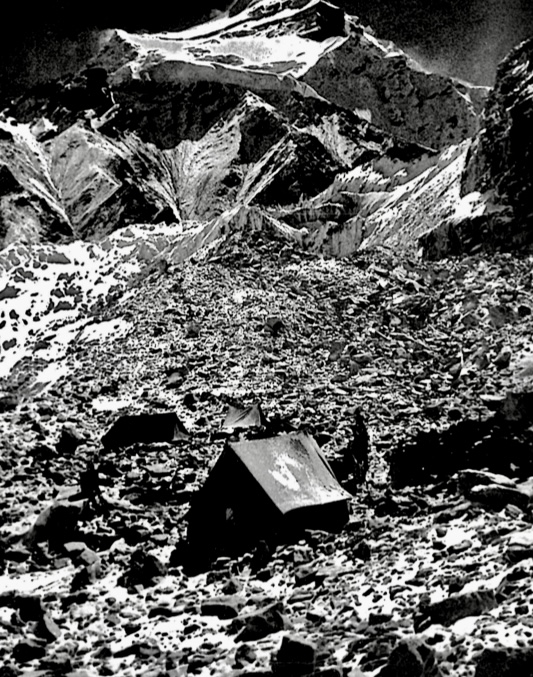
Cho Oyu from Base Camp, in 1954. Photo: Herbert Tichy
Regrouping and waiting
At Camp 1, the team regrouped. Tichy’s hands needed hospital care, but Kathmandu was three weeks away. They decided Pasang and a few Sherpas would bring supplies from Marlung, while Tichy rested.
Camp 1 was “idyllically situated,” with views of Cho Oyu and other peaks. Each day, they watched Cho Oyu’s snow plume to gauge the summit winds.
“We knew that only an almost windless day would make an ascent possible,” Tichy wrote. The weather stayed clear but wild, with fierce winds signaling winter’s approach.
They waited for Pasang. Tichy’s hands, wrapped in fleece and three pairs of gloves, remained useless but protected. The team’s hope wavered after the storm’s brutality, but Pasang’s return sparked new determination. He had trekked from Marlung over the Nangpa La in just three days, driven by fear that a Swiss expedition led by Raymond Lambert, now nearby, might beat them to the summit.
The second attempt
The team planned a second summit push, learning from their earlier failure. Instead of tents at Camp 3, they dug an ice cave, inspired by Arctic igloos. Once, Joechler and two Sherpas tried to reach Camp 4 at 7,010m, but returned. Supplies were low, and Pasang’s earlier absence had limited their options. The Swiss team’s presence added pressure; they had only one shot at the summit.
They finally set a new Camp 4 a little bit higher, but digging another ice cave was impossible in the hard snow, so they anchored their tents tightly. Joechler and Pasang were chosen for the summit push, while Tichy debated joining them.
“I hated my helplessness,” he admitted. He decided to climb without a rope, so he could turn back without slowing the others. “If I found I was not fit enough myself to grapple with Lady Luck, I would at any rate still not have cost them the summit,” he reasoned.
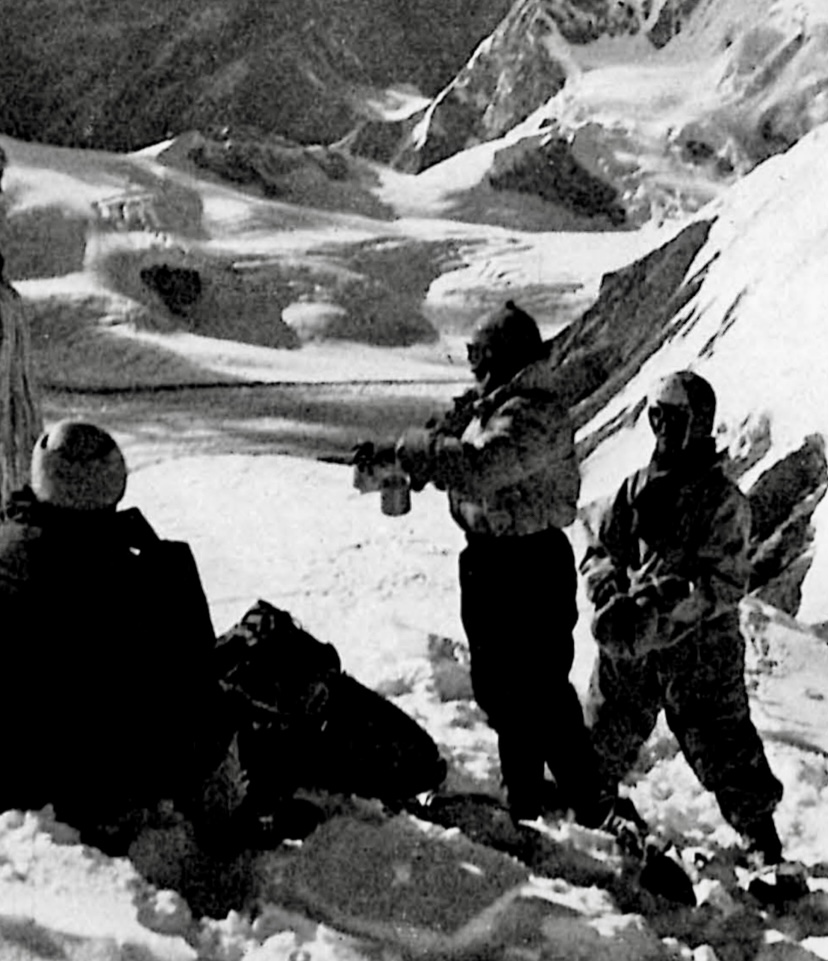
During the first ascent expedition. Photo: Herbert Tichy
The summit push
On October 19, Tichy, Joechler, and Pasang started around midnight. The three climbers moved fast, mostly without ropes to save time. Pasang led, using his Everest experience to pick the best path through snowfields. Tichy’s hands got so cold they started to freeze. Joechler stayed close, ready to catch a possible slip. At sunrise, they reached the summit ridge. The wind was sharp, and Tichy’s fingers turned black from frostbite.
“My hands were useless, but I could not turn back so close to the goal,” Tichy said.
On October 19, 1954, at 3 pm, they stood on Cho Oyu’s summit. But getting down was challenging; Tichy’s frostbitten hands were swollen and useless. Pasang and Joechler helped him, and the three men finally completed the descent to Base Camp.
“We proved that courage and teamwork could do what heavy expeditions could not,” recalled Tichy in his expedition report.
Cho Oyu became the fifth 8,000’er ascended, after Annapurna I, Everest, Nanga Parbat, and K2.
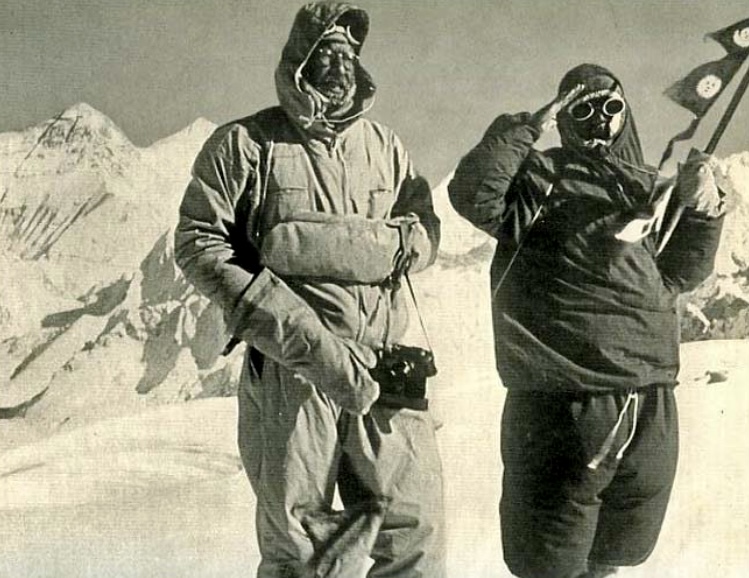
Herbert Tichy, left, and Pasang Dawa Lama Sherpa. Cho Oyu, October 19, 1954. Photo: Herbert Tichy
